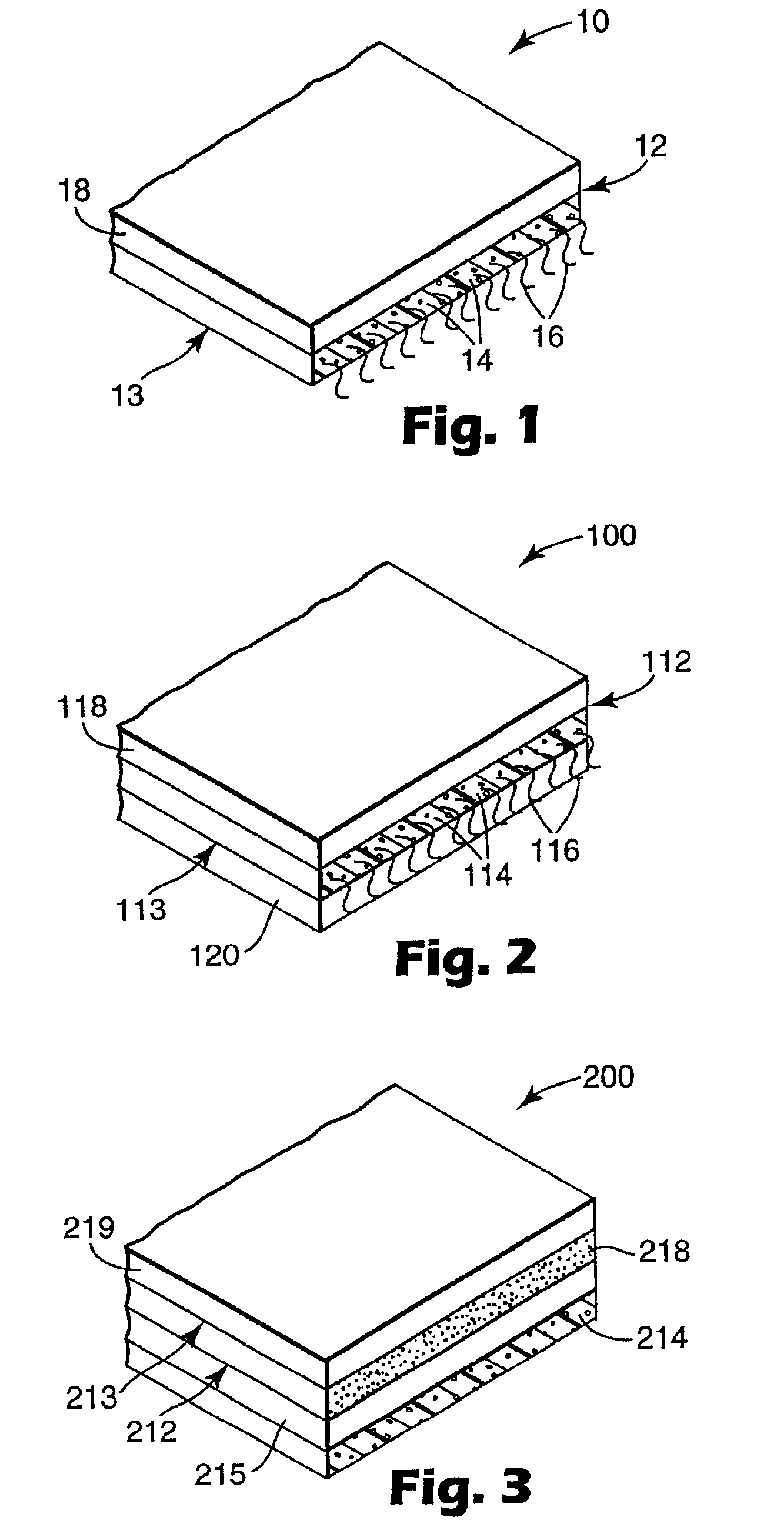Cleanly removable tapes and methods for the manufacture thereof
a tape and tape technology, applied in the field of adhesive materials, can solve the problems of affecting the use of adhesives, and causing damage to the substrate, so as to reduce or eliminate the tendency of materials to ignite, prevent dripping, and cut off the oxygen supply
- Summary
- Abstract
- Description
- Claims
- Application Information
AI Technical Summary
Benefits of technology
Problems solved by technology
Method used
Image
Examples
examples
All amounts listed in the Examples are by weight unless otherwise specified. In the test methods and examples below, all the sample dimensions (typically the length) are approximate dimensions except for the width wherein the width was measured to the accuracy of the cutting tool.
Test Methods
Flammability Test Method
This test method is based on the criteria and procedures for showing compliance with F.A.R. § 25.853 (July 1990) but differs from F.A.R. § 25.853 (July 1990) in that the specimens (samples) were conditioned at 50%±10% relative humidity for a minimum of 24 hours instead of the specified 50%±5%.
Samples were conditioned to 21.1° C.±2.8° C. (70°±5°F.) and at 50%±10% relative humidity for a minimum of 24 hours. Specimens were mounted into a U-shaped metal frame so that the two long edges and one narrow edge were held securely in a vertical orientation, unsupported by and unattached to a substrate. The exposed area of the specimen was at least 50.8 mm (two inches) wide and abou...
examples 1-11
Compounded Core Adhesive H-N were combined with Precompounded Skin Adhesives A-G to prepare three layer tapes as follows:
After a core adhesive was compounded as described above, it was pumped directly through a heated hose to the center / middle layer of an about 203.2 mm (8 inches) wide, three layer CLOEREN die (available from The Cloeren Company, Orange, Tex.) with a gap of about 1 mm (0.040 inches). The die temperature was 320° F. (160° C.).
Simultaneously, a Precompounded Skin Adhesive was fed to the each of the outer layers of the die from a second 51 mm single screw extruder (Bonnot) and coextruded with the core adhesive extrudate above. The Bonnot zone temperatures were all set at 149° C. (300° F.). The pump and heated hose were set at 163° C. (325° F.). The skin adhesive flow rate was adjusted to provide a target thickness of each outer layer of 0.076 mm (3 mils). The process conditions were adjusted to provide the tape thickness set forth in Table 4. The extruded sheet was cas...
examples 6-11
Flammability
The tapes of Examples 6-11 were tested for flammability according to Flammability Test Method. Data is set forth in Table 6.
TABLE 612 Second Vertical Burn ResultsDrippingBurnBurnFlameLength,Time,Time,mmOverall,ExampleDrippingssecondsseconds(inches)Pass / Fail6Yes04.696.5pass(3.8)7Yes013139.7pass(5.5)8Yes00103.6pass(4.08)9Yes0>15>203.2fail(>8)10Yes0>15>203.2fail(>8)11Yes0>15>203.2fail(>8)
It is believed that the flammability of Examples 9, 10, and 11 could be improved by reducing the amount of tackifying resin used, by increasing the total amount of fire retardant, and by substituting a brominated fire retardant, such as FR 370, for a portion of IFR 23 fire retardant.
PUM
| Property | Measurement | Unit |
|---|---|---|
| diameter | aaaaa | aaaaa |
| aspect ratio | aaaaa | aaaaa |
| elongation to break | aaaaa | aaaaa |
Abstract
Description
Claims
Application Information
 Login to View More
Login to View More - R&D
- Intellectual Property
- Life Sciences
- Materials
- Tech Scout
- Unparalleled Data Quality
- Higher Quality Content
- 60% Fewer Hallucinations
Browse by: Latest US Patents, China's latest patents, Technical Efficacy Thesaurus, Application Domain, Technology Topic, Popular Technical Reports.
© 2025 PatSnap. All rights reserved.Legal|Privacy policy|Modern Slavery Act Transparency Statement|Sitemap|About US| Contact US: help@patsnap.com



